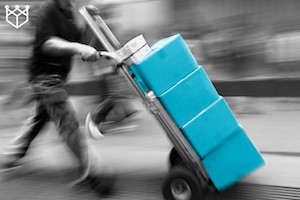 A great balance was shifted in 2016: for the first time ever, studies began to show that consumers are doing more of their shopping online than in brick-and-mortar stores. A five-year-old study by from comScore and UPS confirms that shoppers now make 51% of their purchases online.
A great balance was shifted in 2016: for the first time ever, studies began to show that consumers are doing more of their shopping online than in brick-and-mortar stores. A five-year-old study by from comScore and UPS confirms that shoppers now make 51% of their purchases online.
Online shopping is increasing at a rapid pace as retailers try to woo the increasing numbers of online shoppers into buying from their websites. This has created stiff competition amongst shippers, who are constantly trying to outdo one another with faster shipping, lower rates and better customer service.
Unintended results
This “logistics speed race” isn’t the only consequence of the increase in online shopping. Consumers are becoming spoiled with the concepts of fast and free shipping. Nine out ten consumers now say free shipping is the number one incentive when shopping online. Other studies have shown that consumers now expect to wait an average of 4.8 days for delivery, which is down from 5.5 days in 2012, and 60% say that they are unwilling to wait more than 5 days.
Retailers have answered the demands of online shoppers, but they have inadvertently spoiled consumers with free or low shipping rates and fast delivery.
Industry giants react
To counter this, the retail giants have already made their moves:
- Amazon has increased its same-day delivery service to 27 major metropolitan areas. This combines with their Prime service, which offers free two-day shipping anywhere.
- Target not only offers rush delivery to many cities, but consumers get free shipping by spending certain amounts or using the store’s credit card.
- Walmart offers free same day pickup at many of their stores nationwide.
Free and fast shipping is an easy pill to swallow for companies that are worth $292.6 billion, $215.7 Billion and $49.4 Billion, respectively. But how are smaller companies and shippers to keep up with the increasing demand for faster, cheaper shipping?
How shippers can keep up
It falls on shippers to not only supply these services to attract more customers, but to find ways to make them affordable, as well. How can this be done? In 2017, shippers will need to:
- Embrace new technologies that will help them drive down their costs.
- Find the best fuel prices and know what to look for when choosing carriers.
- Optimize warehouse procedures to decrease pick and load times.
Shippers can also partner with a third party logistics provider (3PL) to help them drive down costs while decreasing picking, packing and shipping times. At King Solutions, we offer tailored shipping solutions that help businesses better serve their customers for less.
To talk about what we can do for your business, contact our team today.







 Joel Rice
Joel Rice